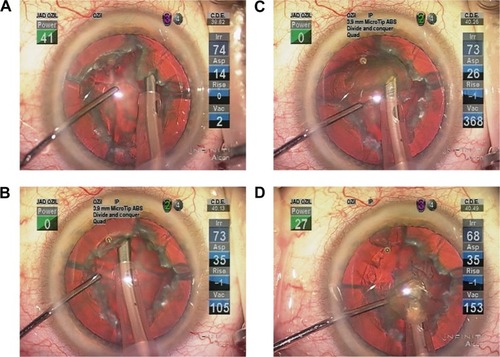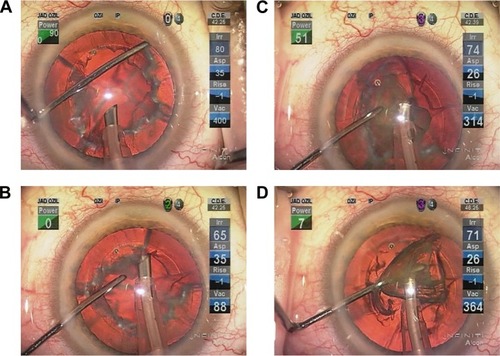Figures & data
Table 1 Ultrasonic energy and fluidic parameters for longitudinal and torsional (IP) quadrant removal
Figure 1 Aspiration of first quadrant.
Abbreviations: IP, Intelligent Phaco; CDE, cumulative dissipated energy; Irr, irrigation; Asp, aspiration; Vac, vacuum.

Figure 2 Emulsification and removal of subsequent nuclear plates.
Abbreviations: IP, Intelligent Phaco; CDE, cumulative dissipated energy; Irr, irrigation; Asp, aspiration; Vac, vacuum.

Table 2 Preoperative and intraoperative case characteristics
Table 3 Postoperative results for ECD loss and SIA
